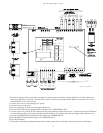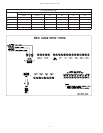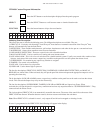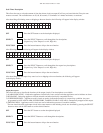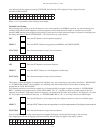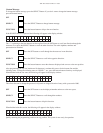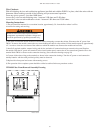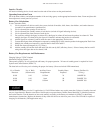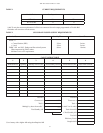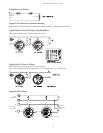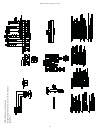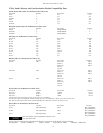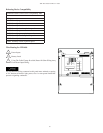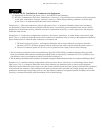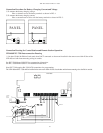
51
VFR-400 • 5403548 • REV D • 10/07
Battery Size Requirements And Maintenance
Charging Voltage: 27VDC Nominal
Maximum Charging Current: .5A
These panels require a 24 volt sealed lead acid battery for proper operation. 24 hours of standby power is required for Local
Systems and Central Station (NFPA-72).
The chart below will assist you in selecting the proper size battery: (Does not include LED Annunciator)
No. of Smoke No. of Bells Auxiliary Power Standby Hours Battery Size/Part No.
Detectors (100mA each) Requirements Required (2 Req.)
0-100 0-10 0-25mA 24 8AH/BT 80
0-100 0-10 0mA 90 12AH/BT 120
0-100 0-10 0-30mA 90 18AH/BT 180
Maximum allowed battery size for UL applications is 12AH. FM and others may require more than 24 hours of standby time and
may use larger batteries. Batteries rated above 18AH require a separate battery cabinet (Potter Model BC-2). Mark the purchase
date on the batteries. Test the batteries at least semi annually according to the battery test methods in NFPA72 or the battery
manufacturers instructions. Replace the batteries if they either fail the test or after four years of use. The VFR-400 is capable of
charging 24 AH batteries, (FM Applications only).
Inactive Circuits
All inactive initiating device circuits must have the end-of-line resistor on the panel terminal.
Operating Instructions Form
Fill in the name, address, and telephone number of the servicing agency on the appropriate instruction sheet. Frame and place this
sheet adjacent to control panel at eye level.
Battery Size Calculations
To use Calculation Table:
1) List in column #1 all devices used in the system, include all modules, bells, horns, door holders, and smoke detectors
(see table #1 or manufacturers specifi cations).
2) List in column #2 the quantity of each device.
3) List in column #3 the standby current of each device (exclude all signal indicating devices).
4) List in column #5 the alarm current of each device.
5) For each line, multiply the fi gure in column #2 by the fi gure in column #3 and enter the product in column #4. Then
multiply the fi gure in column #2 by the fi gure in column #5 and enter the product in column #6.
6) Add the fi gures in columns #3 and #6, enter the sums in the appropriate Total mA box.
7) Convert these fi gures from milliamperes to amperes by multiplying by 0.001, enter the product in the appropriate Total A box.
8) Multiply the standby total amperes by required time in hours from table 2.
9) Divide the alarm total amperes by 12 (5 mins.).
10) Add the standby AH and the alarm AH and divide this sum by 0.85 (effi ciency factor). Select a battery that has an AH
rating above this fi gure but not less than 6.5AH.



